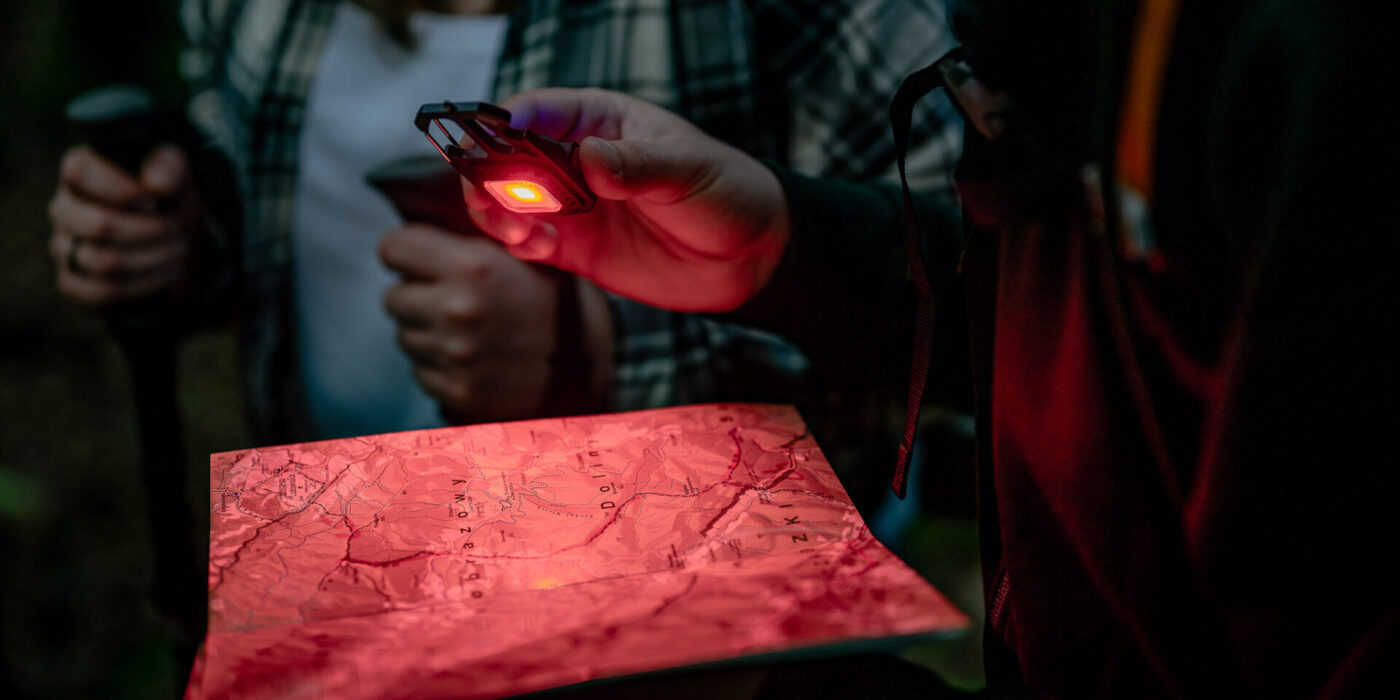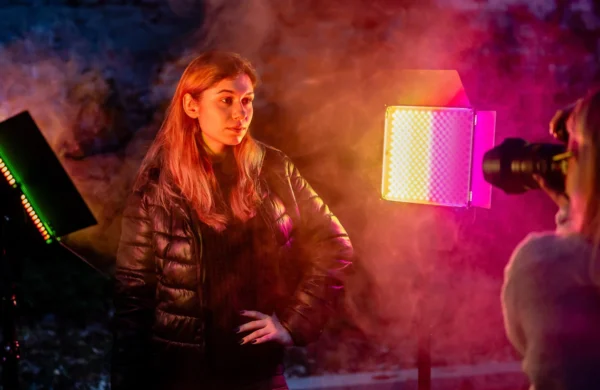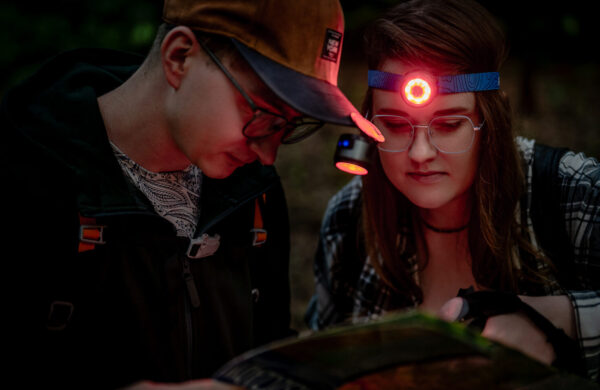Camping is one of those experiences that has been gaining popularity recently when we are surrounded by new technologies almost around the clock. It’s not only an opportunity to get away from daily chores, discover new places, take beautiful photos, and relax. It’s also a chance to gain survival experience in harsh conditions. If you are ready for an adventure that will connect you with nature, we have prepared a short guide for beginner campers.
In this article, we want to provide some essential tips and advice to make your first camping experience safe and enjoyable. We will discuss issues such as:
- planning a camping trip,
- choosing the ideal location,
- packing essentials,
- places where you can camp “wild” in Poland,
- taking care of the appropriate comfort of spending time in nature and…
- … support in the form of several gadgets for those who are not yet ready to part with electronics one hundred percent.

Planning a camping trip
No guide can replace the experience you will gain by spending time in nature. However, we hope the following tips will help you prepare for your first trips to the woods, water or mountains. Depending on your needs or level of sophistication when it comes to coping in the wilderness, you can prepare for an expedition in dozens of different ways. However, if you don’t have much experience yet, use the following tips to ensure your optimum level of comfort.
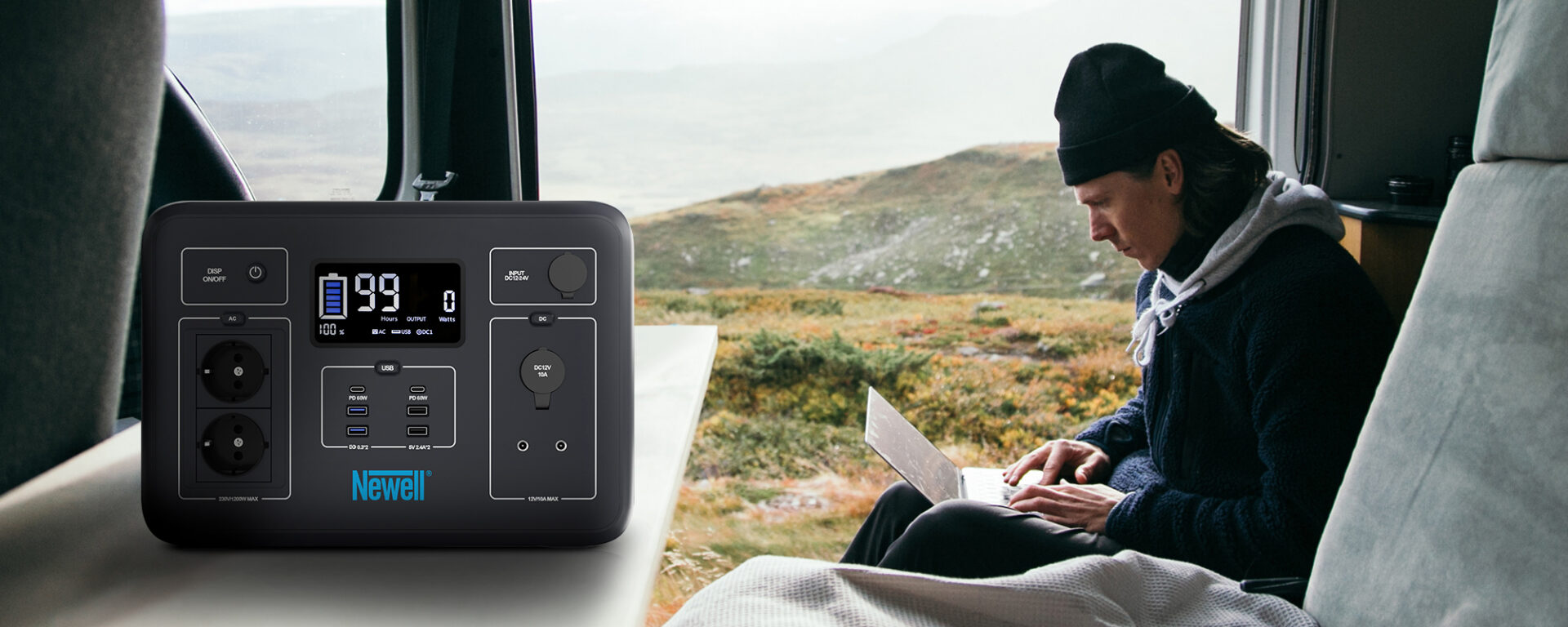
Choose a date and location
- Find out what the weather will be like – It’s a good idea to start with a trip that won’t surprise you with a cloudburst. When preparing for your first camping trip, make sure the weather will be in your favor. If you are planning a trip in the winter or during rainy weather, be prepared for harsher conditions. Make sure you have the right clothing and equipment for the changing weather.
- Determine the difficulty level of your expedition – If you are a beginner at camping, you don’t have to immediately sleep under a tarp and feed only on what you find in the woods. Start with more comfortable and safe conditions to see if relaxing in nature is something for you. Make sure you have the right equipment, and if you want to add variety to your camping trip, simply expand it to include a visit to hiking trails, rather than fund yourself a survival lesson the first time you go out of town.
- Avoid crowds – If you’re looking for a break from the hustle and bustle of the city, look for less popular spots or go camping in the off-season. This will allow you to really immerse yourself in nature and enjoy the tranquility.
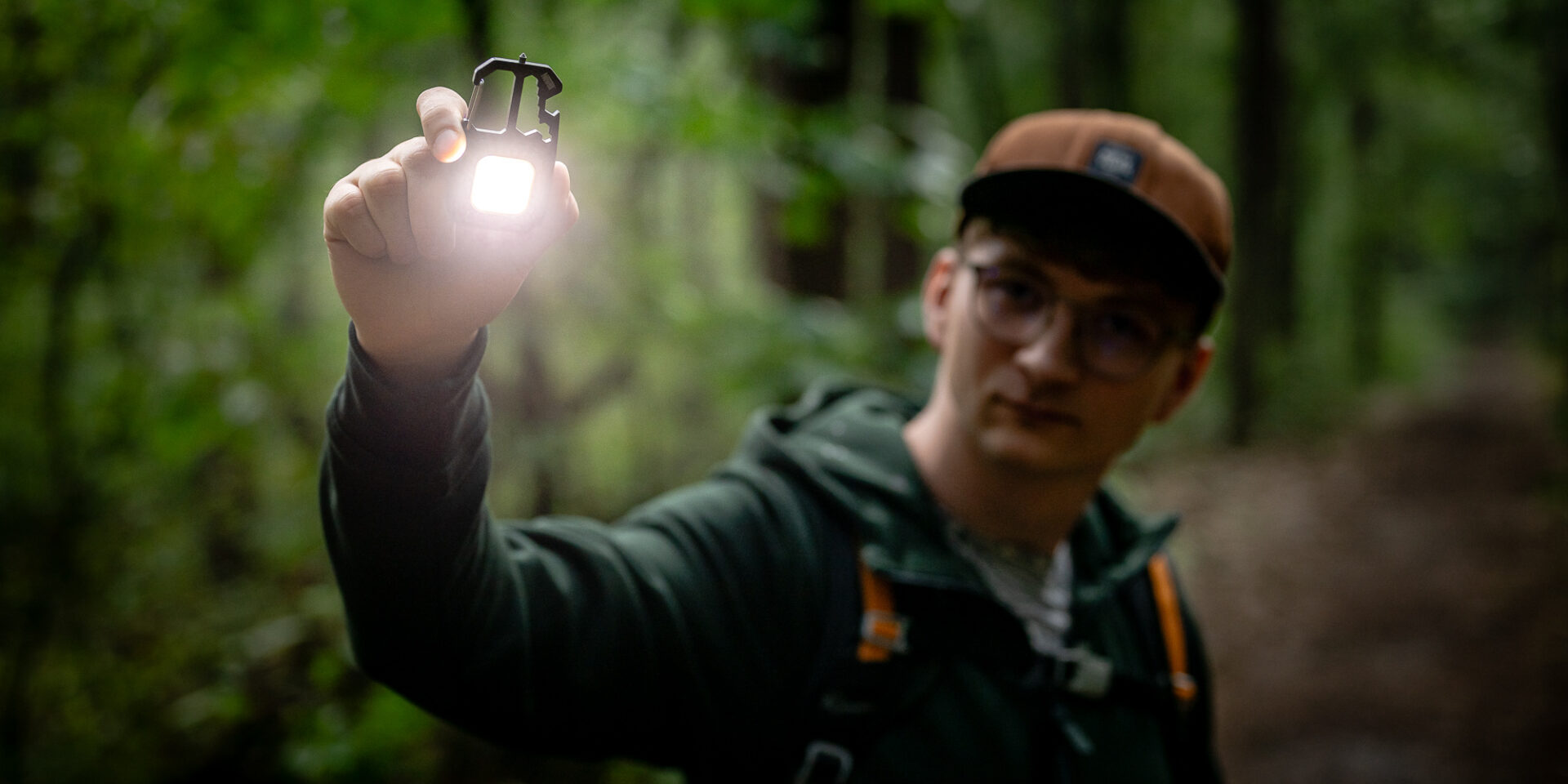
Planning your routes while camping
A good plan is half the battle. With the right approach and taking the right equipment with you, you will be able to enjoy the beauty of nature in controlled conditions. Here’s what to consider when looking for a camping spot and routes to get you there.
- Familiarity with the area – Know thoroughly the places you intend to explore. Familiarize yourself with hiking guides and maps. Planning your routes is crucial for safety. It’s always a good idea to factor in time reserves to avoid hiking after dark. Also, make sure it is legal to camp at your travel destination.
- Remember about the stops – Plan all sections of your trip in advance, taking into account rest stops and points where you plan to stop for the night.
- Orientation in the field – Remember that your smartphone may lose range in the mountains or dense forest. It’s a good idea to learn how to use a map or compass and have them with you during your trip.
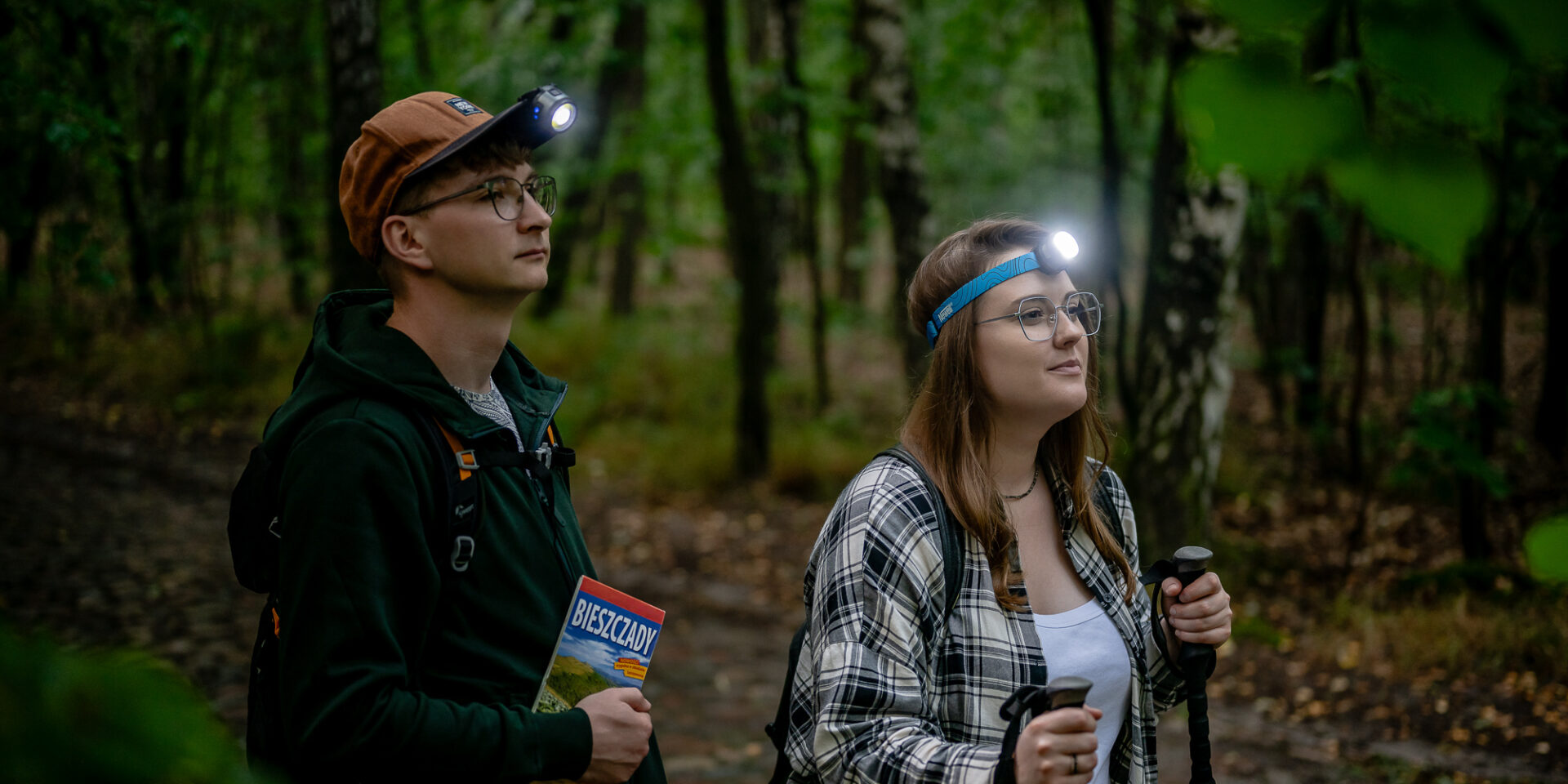
Choosing a place to camp in Poland
Choosing the right place to go camping has a huge impact on the quality of your adventure. Location is especially important when we are talking about beginners. And here’s an important note. When we write about camping, we do not mean campgrounds or hostels. And here comes the main challenge – there are not many places that allow camping “in the wild” in our country. After all, you need to know that every forest is someone’s property – whether private or under the control of the State Forests. So we can’t just pick any spot and simply pitch a tent there. Fortunately, the situation has been changing for good for some time. It’s all thanks to the growing number of places that allow people to spend the night “in the wild” in Poland. The State Forests have created the “Stay Overnight in the Forest” program. Maps and detailed information on places to camp can be found at:

Criteria for choosing the perfect camping spot
- Safety – Make sure that the place where you want to stay is not at risk of avalanches, landslides, or other dangerous phenomena. Pay attention to the weather forecast and any warnings.
- Access to water – Choose places near water sources. This will make daily activities such as cooking and washing up easier. And if you have the option, just take a supply of water with you.
- Views and landscapes – We all know that camping is not only about new experiences, but also about souvenir photos. Choose places that offer beautiful views and scenic landscapes.
- Campfires – Lighting campfires is only possible in places designated by the forestry commissioner. Information about them can be obtained from the local forest district and on the websites of forest districts.
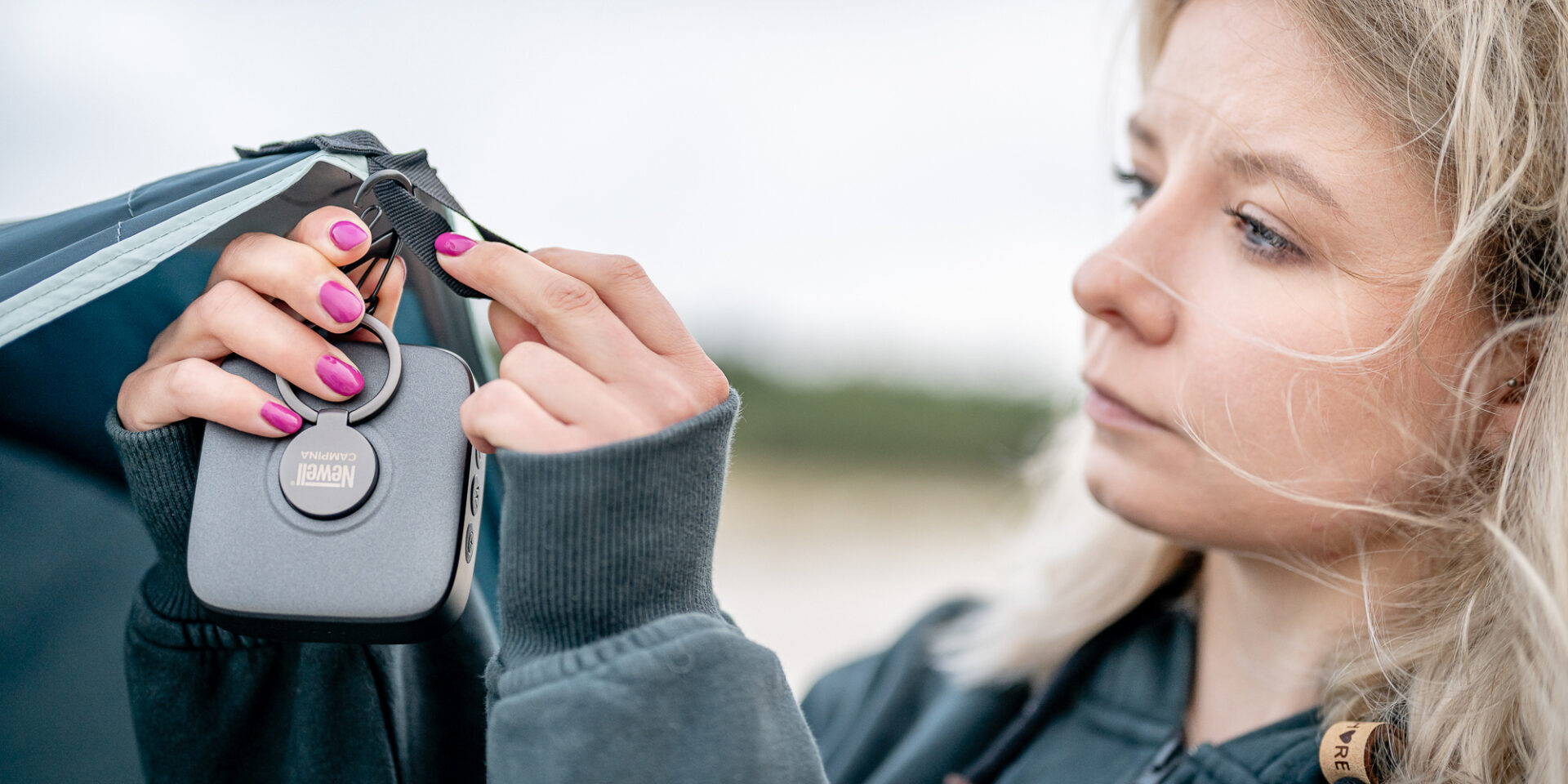
Packing a backpack for camping
Packing is a key step in preparing for a successful camping trip. Here are tips on what to bring with you.
- Tent and sleeping bag – Investing in a lightweight, durable tent and a high-quality sleeping bag is a guarantee of comfortable sleep while camping. When choosing a model, pay attention to the season in which you will be camping to ensure adequate thermal insulation.
- Carrimat/ self-inflating mat/hiking pillow – For even more comfort and insulation from the ground, use a karimata or self-inflating mat and a lightweight hiking pillow.
- Kitchen equipment – Choose lightweight kitchen sets that include a pot, pan, and other essential tools. Also, consider a small gas cylinder that will allow you to cook regardless of the possibility of campfires. Keep in mind, however, that the places where you can use hiking stoves are also designated by the forestry authorities.
- Multi-seasonal clothing – Choose multi-seasonal clothing that effectively protects you from the weather while being lightweight and space-saving. Dressing “on the bulb” allows you to adapt your clothing to the changing weather.
- Multitools – Menasks, sporas, and multitools are extremely useful when camping. They will come in handy during meals, repairing equipment or working with wood.
- First aid kit – A first aid kit should be properly stocked and tailored to the type of activity and possible hazards.
- Full belly – Calculate how many calories you will need for each day, taking into account your planned physical activity. Choose light and nutritious foods such as dried fruits, nuts, freeze-dried meals, or energy bars.
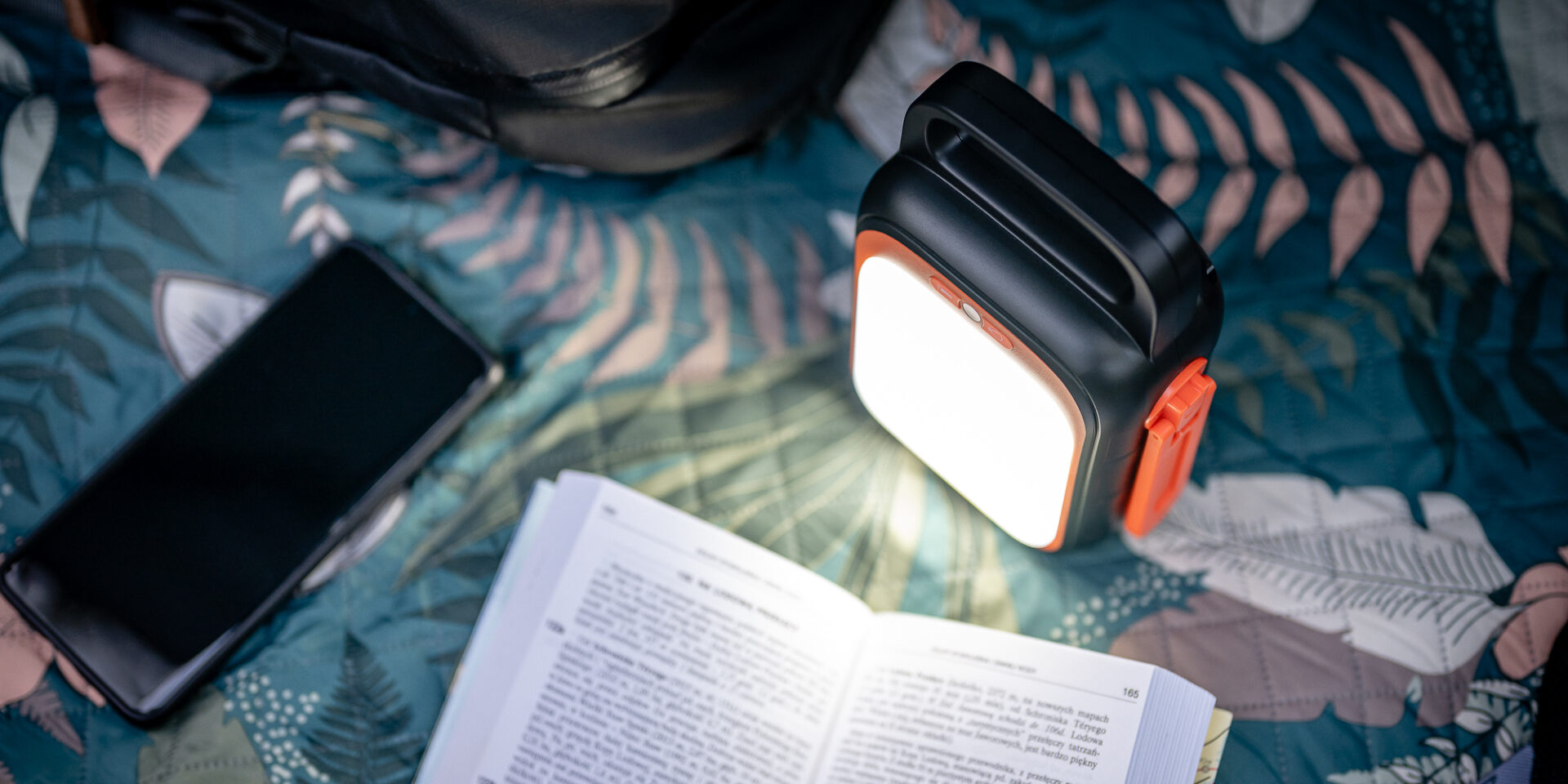
Electricity and light on a camping trip
When going camping, away from civilization and its amenities, electricity and lighting can be a challenge. However, nowadays there are simple solutions that allow you to use electronics comfortably even when you are in the middle of the woods.

- Power stations – This is a good choice for anyone who values independence and freedom of action. Power stations allow you to replenish energy in your devices, without having to search for outlets or use free-standing chargers. They are powerful, portable energy sources that offer much more capacity and power than traditional power banks. As a result, they are able not only to charge smartphones, tablets, or headphones, but also to power devices with higher energy requirements, such as laptops, monitors, and even some household appliances or power tools. The power stations are equipped with a variety of ports and sockets to connect a wide range of devices, making them extremely versatile and practical for a wide variety of situations.
- Headlamp – An essential item for any camping trip. It allows you to move efficiently around the place where you have set up camp when the sun goes down. A great choice can be our Newell Campina Multi. It’s a compact source of powerful light for night hiking (hiking or biking), camping, and camping. With XPG and COB LEDs, the device offers 7 different light modes (including red warning light and flash). Thanks to the adjustable headband, the flashlight can be used as a headlamp. You will also attach it to a hat (mounting clip) or metal surface (magnet). The 3-stage angle adjustment makes it easy to direct the light precisely. The device meets the IPX4 waterproof standard, which means it will also work well in the drizzle. Charging the flashlight is fast and convenient thanks to its capacious battery (800 mAh) and USB-C port.
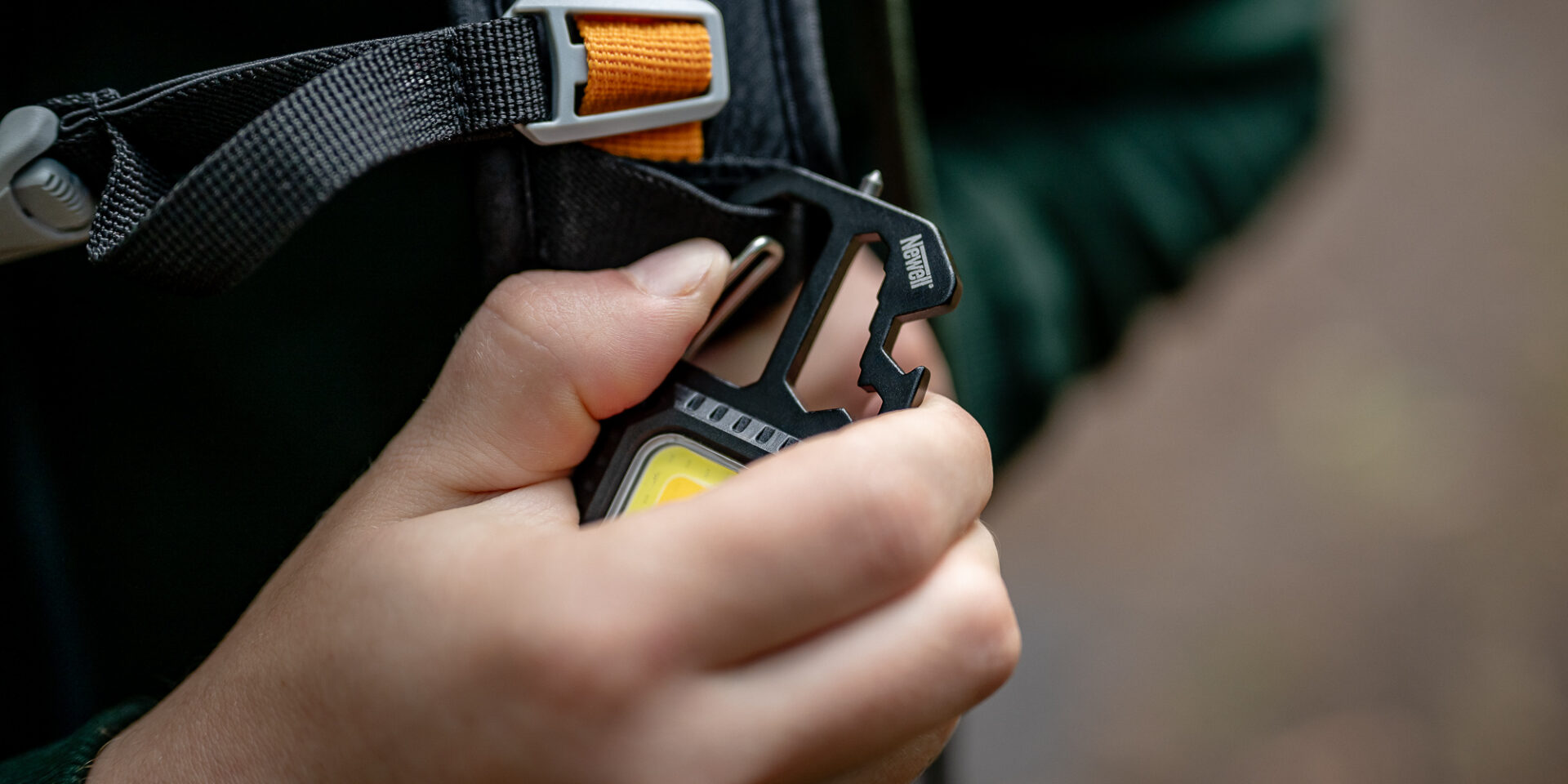
- Multifunction LED light – It’s worth equipping yourself with an extra light source for emergency situations. The Newell Lunar Multitool is a multitasking LED light that you clip to your belt loop or backpack with a sturdy metal snap hook. With 6 different light modes, it will provide visibility in the dark, allow you to light the way, and also work as a red flashing emergency light. It is also a multi-tasking multitool offering: a socket wrench compatible with 7 different types of screws, a screwdriver equipped with interchangeable bits, a glass breaker, and a bottle opener. This inconspicuous gadget will save you from trouble more than once! Thanks to the built-in 500 mAh battery, the light provides up to 3 hours of uninterrupted operation on a single charge. You will also find a handy folding tripod included.
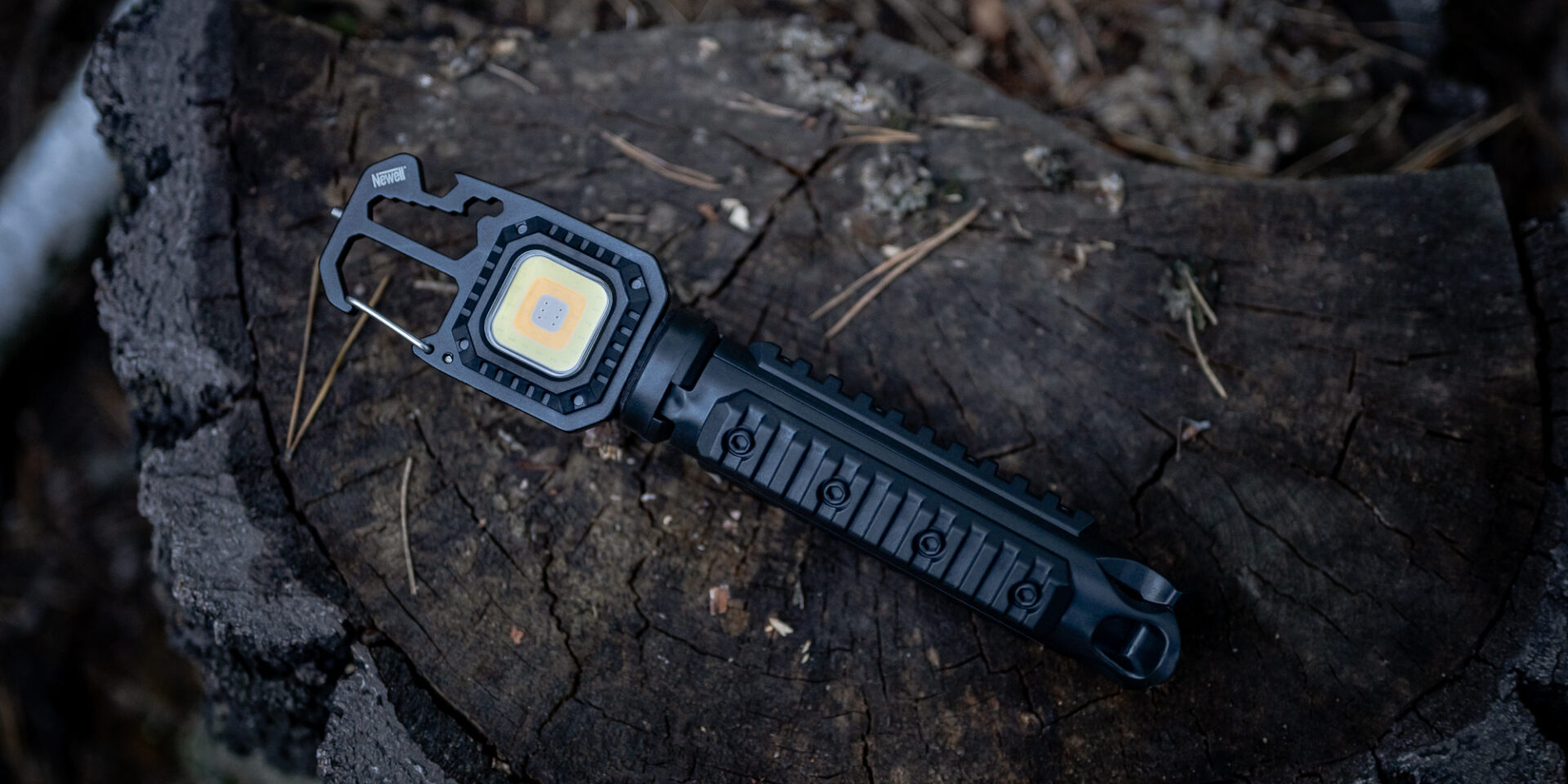
Safety while camping
Safety is a priority during any camping trip. You can’t predict everything, but before your first camping trip, it’s a good idea to do a little reading about how to prepare for various emergencies.
- A well-equipped first aid kit – Make sure you have a properly stocked first aid kit. Add to it painkillers, antihistamines, and bandages.
- First aid – Familiarize yourself with basic first aid techniques. These are skills that can save lives in an emergency.
- Understanding the body’s response – Learn how the body reacts to different conditions and situations, such as sunstroke, hypothermia, and food poisoning. This will help you prevent and recognize potential dangers.
- Know the local animal species – Before you go to a particular place, find out what wild animals can be found there and how to behave if you unexpectedly encounter one in the wild. Not all of them are aggressive, of course, but it’s a good idea to be prepared.
- Appropriate clothing – Choose clothing that protects against wind, rain, and cold. Proper attire will ensure thermal comfort and safety in changing conditions.
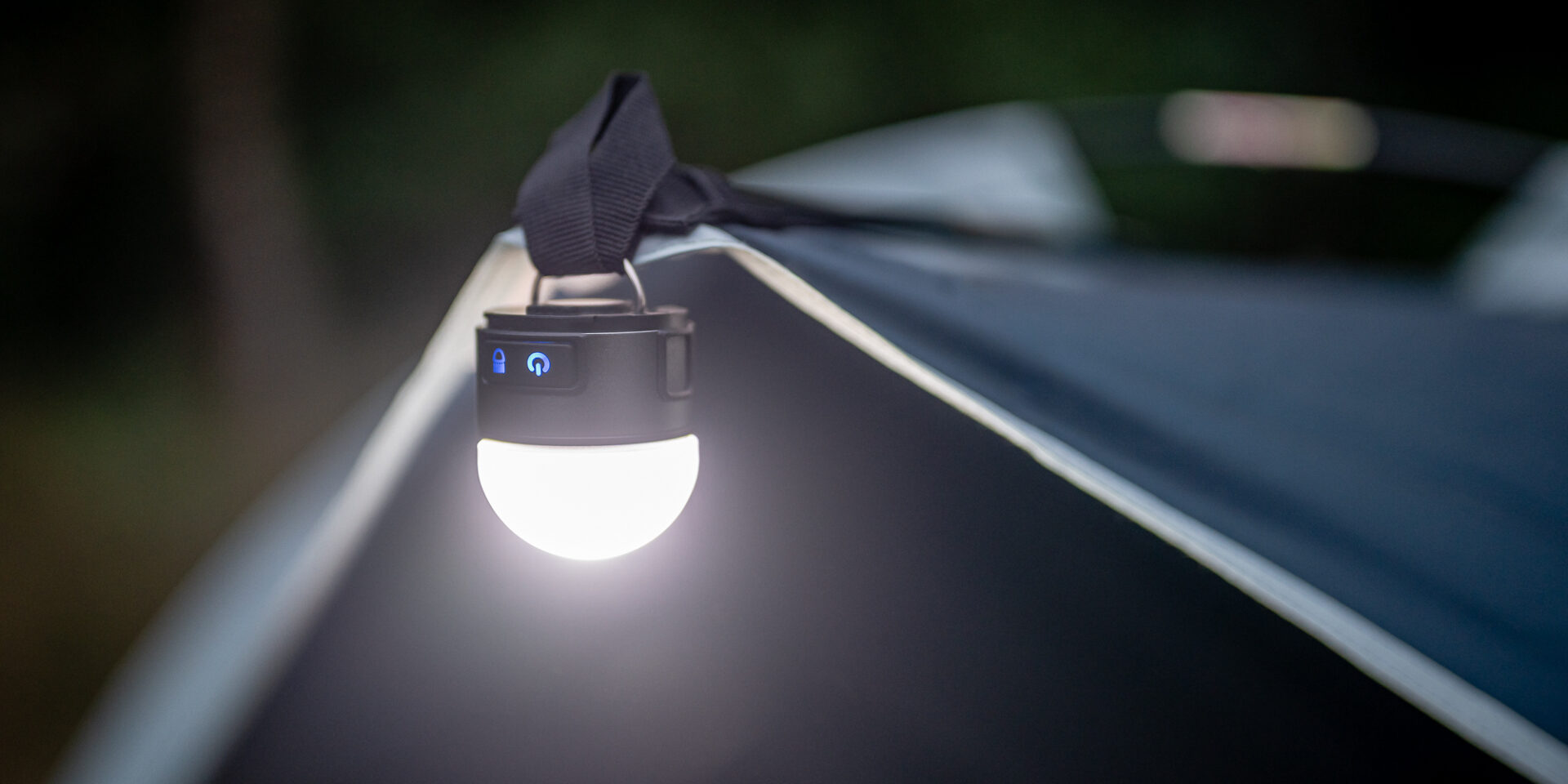
It’s time for your first camping trip!
Ready for your first camping trip? We hope that all your adventures in nature will turn into unforgettable experiences, devoid of unplanned emergencies.
Don’t forget to share your own tips and memories of your first camping trips on our Facebook or Instagram page. Every such experience is an inspiration for other nature lovers. Join our community and share your passion!

